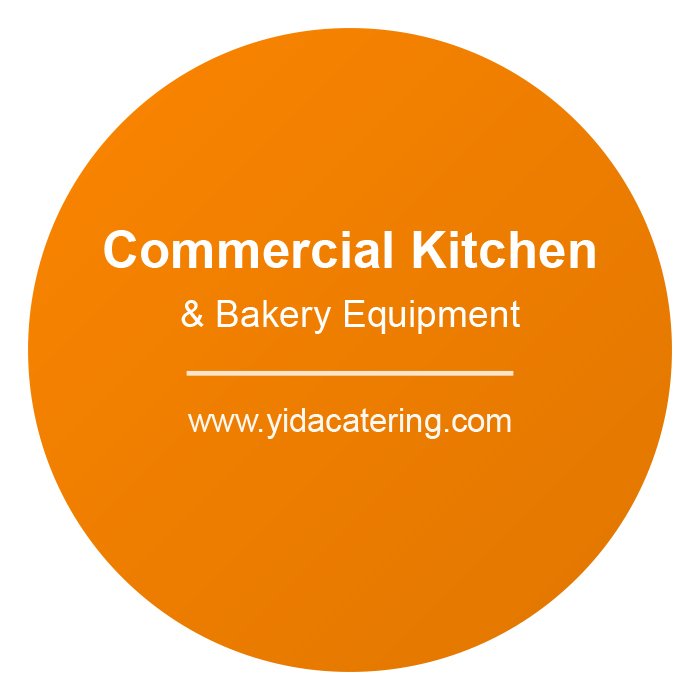In the world of professional kitchens, efficiency and consistency are non-negotiable. Whether you’re running a bakery, restaurant, or catering business, a commercial mixer is an indispensable tool. These powerful machines are designed to handle large-scale food preparation tasks, ensuring that your operations run smoothly and your products meet the highest standards of quality. In this guide, we’ll explore the types of commercial mixers, their features, and how they can transform your kitchen.
Why Invest in a Commercial Mixer?
- Increased Productivity
- Commercial mixers can handle large batches of ingredients, significantly reducing preparation time. This allows your staff to focus on other critical tasks.
- Consistent Results
- Unlike manual mixing, commercial mixers ensure uniform blending, which is essential for maintaining the quality and consistency of your recipes.
- Versatility
- These machines are not limited to mixing dough or batter. With the right attachments, they can whip cream, grind meat, and even slice vegetables.
- Cost-Effectiveness
- While the initial investment may seem high, the time and labor saved make commercial mixers a cost-effective choice in the long run.
- Durability
- Built to withstand heavy use, commercial mixers are made from high-quality materials, ensuring they last for years.
Types of Commercial Mixers
1. Planetary Mixers
- How They Work: The mixing attachment rotates on its axis while the bowl remains stationary.
- Best For: General-purpose tasks like mixing batters, whipping cream, and kneading light dough.
- Common Sizes: Available in capacities ranging from 5 to 140 quarts, making them suitable for small cafes to large bakeries.
2. Spiral Mixers
- How They Work: The bowl rotates while the mixing hook remains stationary, mimicking hand-kneading.
- Best For: Heavy doughs like bread, pizza, and bagels.
- Advantages: Prevents overheating of dough, preserving its quality and texture.
3. Vertical Cutter Mixers (VCM)
- How They Work: Combines high-speed cutting and mixing in a vertical bowl.
- Best For: Chopping, mixing, and emulsifying large quantities of ingredients.
- Applications: Ideal for soups, sauces, and processed foods.
Key Features to Look for in a Commercial Mixer
- Capacity
- Choose a mixer with a bowl size that matches your production needs. Overloading a smaller mixer can lead to inefficiency and wear.
- Speed Settings
- Multiple speed options allow for greater control, enabling you to handle a variety of tasks from slow kneading to high-speed whipping.
- Attachments
- Look for mixers that support a range of attachments, such as dough hooks, wire whisks, and flat beaters. Some models also offer optional accessories like meat grinders and pasta rollers.
- Durability
- Opt for mixers made from stainless steel or other heavy-duty materials to ensure longevity.
- Ease of Cleaning
- Removable bowls and dishwasher-safe attachments make cleaning quick and hassle-free.
- Safety Features
- Safety guards, automatic shut-offs, and anti-slip bases are essential for preventing accidents in busy kitchens.
Applications of Commercial Mixers
- Baking
- From bread and cakes to cookies and pastries, commercial mixers are a baker’s best friend.
- Catering
- Prepare large quantities of mashed potatoes, sauces, and other side dishes with ease.
- Restaurants
- Mix salad dressings, marinades, and even grind meat for burgers.
- Pizzerias
- Knead large batches of pizza dough quickly and efficiently.
Tips for Choosing the Right Commercial Mixer
- Assess Your Needs
- Consider what you’ll be using the mixer for and choose a model that meets those specific requirements.
- Check the Warranty
- A good warranty is a sign of a manufacturer’s confidence in their product.
- Read Reviews
- Research customer feedback to ensure you’re investing in a reliable and efficient machine.
- Consider Energy Efficiency
- Look for mixers with energy-saving features to reduce operating costs.
How to Maintain Your Commercial Mixer
- Regular Cleaning
- Clean the bowl and attachments after every use to prevent residue buildup.
- Inspect for Wear
- Regularly check belts, gears, and other components for signs of wear and replace them as needed.
- Lubricate Moving Parts
- Keep the machine running smoothly by lubricating gears and other moving parts according to the manufacturer’s instructions.
- Follow Manufacturer Guidelines
- Always adhere to the recommended usage and maintenance procedures to prolong the life of your mixer.
Conclusion
A commercial mixer is more than just a piece of equipment—it’s an investment in the efficiency and success of your kitchen. By choosing the right mixer and maintaining it properly, you can streamline your operations, ensure consistent quality, and ultimately boost your business’s profitability.
Explore the wide range of commercial mixers available today and find the perfect fit for your professional kitchen!

